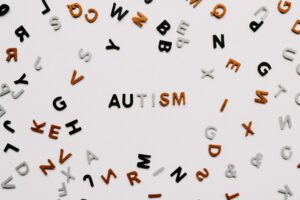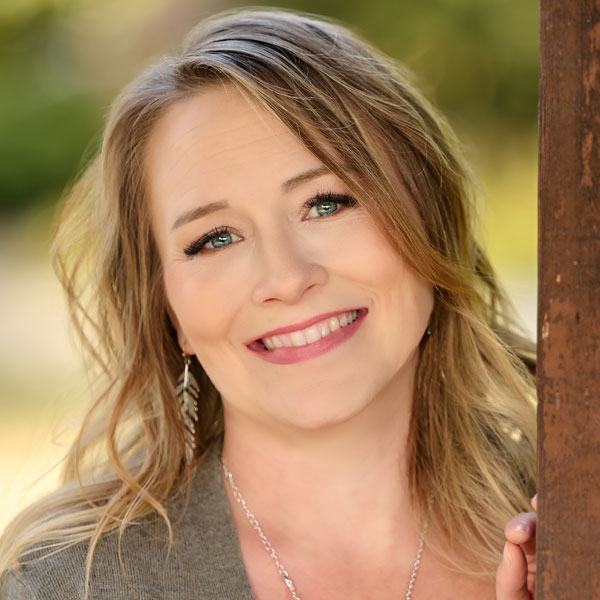It can be frustrating when your mind and body don’t do what you want them to. We all experience this unpleasant disjuncture between our desires and our reality, and that is part of the harsh truth of the human condition. For some among us, this disjuncture is connected to neurodevelopmental challenges that mean that their minds don’t function in typical ways. One such set of challenges takes the form of the condition known as autism.
Autism is a spectrum.
 As no two autistic people experience the same set of symptoms with similar levels of severity, autism spectrum disorder (ASD) is the term that is used in the American Psychiatric Association’s Diagnostic and Statistical Manual, Fifth Edition (DSM-5). Autism is a spectrum precisely because of the variety of signs and symptoms, the different ways in which individuals are impacted by those symptoms, and the support they need as a result.
As no two autistic people experience the same set of symptoms with similar levels of severity, autism spectrum disorder (ASD) is the term that is used in the American Psychiatric Association’s Diagnostic and Statistical Manual, Fifth Edition (DSM-5). Autism is a spectrum precisely because of the variety of signs and symptoms, the different ways in which individuals are impacted by those symptoms, and the support they need as a result.
ASD is a neurodevelopmental disability that affects how one perceives and relates to others. This results in social, behavioral, and communication challenges. ASD begins in early childhood. Often, children show symptoms of autism within the first year. A small number of children may have neurotypical development in their first year of life, then go through a period of regression between 18 and 24 months of age.
ASD causes problems for children and adults as they try to function at school, work, and in their relationships. Though there is no cure for autism spectrum disorder, early intervention and treatment can make a significant difference in the lives of many children.
The causes of autism.
ASD does not have a definitively known single cause. The disorder is complex, which suggests that there are likely multiple causes at work such as genetics and one’s environment that play a role. The controversy around ASD has centered around the supposed link between ASD and childhood vaccines.
The original study that sparked this debate was retracted due to poor design and questionable research methods. Despite extensive research, no reliable study has indicated that a link exists between ASD and any vaccines.
Different types of autism?
Several terms have been used to refer to autism. This variance may have led people to subscribe to the idea that there are different types of autism. Terms such as atypical autism, nonverbal autism, Asperger’s, and high-functioning autism (HFA) are used.
 While people who fit the label of HFA would likely have been diagnosed with Asperger’s syndrome in the past, Asperger’s was removed from the DSM-5 in 2013. Thus, it’s not so much that there are different types of autism, but that autism is a spectrum that encompasses different symptoms and levels of functioning. Each of the terms simply describes variations along that continuum.
While people who fit the label of HFA would likely have been diagnosed with Asperger’s syndrome in the past, Asperger’s was removed from the DSM-5 in 2013. Thus, it’s not so much that there are different types of autism, but that autism is a spectrum that encompasses different symptoms and levels of functioning. Each of the terms simply describes variations along that continuum.
While common usage will use high-functioning autism as the unofficial term used for people whose autism symptoms appear mild, the official diagnostic term is Autism Spectrum Disorder (ASD) level 1. The severity of ASD is described by a level from 1 to 3 in the DSM-5, with these levels being rooted in how much support a person needs.
According to this way of understanding the severity of ASD, a person at Level 1 requires some support, while those at Level 2 require substantial support, and those at Level 3 require very substantial support. For instance, at level 3, they have severe deficits in verbal and nonverbal social and communication skills and require a high level of assistance.
The labels that describe functioning are not without controversy. Within the autism community, these labels are discouraged because they can paint a misleading picture. While an individual might function independently in some areas, they may nonetheless require significant support in others, and in this way, the labels can obscure significant needs. However, the value of assigning labels is that it can assist doctors as they prescribe appropriate therapeutic interventions to meet the unique needs of their patients.
Signs and symptoms of autism.
A proper diagnosis of ASD requires going to a doctor or mental health professional. But some of the signs one can look out for in adults and children that may point to ASD include these patterns of behavior and social interaction. According to the Mayo Clinic, these are the common signs to look out for:
- Struggling to start a conversation or keep one going, or only starting one to make a request or label items.
- Resisting cuddling and holding, and seeming to prefer playing alone, retreating into one’s own world..
- Failure to respond to one’s name or appears not to hear others at times.
- Having poor eye contact and lacking facial expression
- Repeating words or phrases verbatim, but without understanding how to use them.
- Not speaking or having delayed speech, or losing the previous ability to say words or sentences.
- Speaking with an abnormal tone or rhythm and using a singsong voice or robot-like speech.
- Not appearing to understand simple questions or directions.
- Not pointing at or bringing objects to share interest.
- Not expressing emotions or feelings and appearing unaware of others’ feelings.
- Inappropriately approaching a social interaction by being passive, aggressive, or disruptive.
- Having difficulty recognizing nonverbal cues, such as interpreting other people’s facial expressions, body postures, or tone of voice.
- Performing repetitive movements, such as rocking, spinning, or hand flapping.
- Performing activities that could cause self-harm, such as biting or head-banging.
- Developing specific routines or rituals and becoming disturbed at the slightest change.
- Having problems with coordination or having odd movement patterns, such as clumsiness or walking on toes, and having odd, stiff, or exaggerated body language.
- Being fascinated by details of an object, such as the spinning wheels of a toy car, but without understanding the overall purpose or function of the object.
- Being unusually sensitive to light, sound, or touch, while being indifferent to pain or temperature.
- Not engaging in imitative or make-believe play.
- Fixating on an object or activity with abnormal intensity or focus.
- Having specific food preferences, such as eating only a few foods, or refusing foods with a certain texture.
Challenges of being on the spectrum.
Some of the common challenges among people with ASD include the following:
- Anxiety, depression, and other mood disorders that often co-occur with ASD.
- Challenges with communication, including problems expressing themselves both verbally and nonverbally. One may have a limited ability to speak clearly, and they will rarely initiate interactions with other people. Some individuals who are often termed as having nonverbal autism struggle to carry on any kind of significant conversation beyond using a few words in a meaningful manner. Even individuals with HFA may have difficulty understanding the nuances of everyday language such as sarcasm, metaphors, or idioms.
- Difficulties with emotional regulation and controlling one’s emotions. One may get visibly angry or cry over upset plans or a disrupted routine.
- Sensory issues, including finding it hard to process input such as sounds, smells, sights, and touch. As such, stimuli such as bright lights, noise, crowds, smells, strong tastes, and being touched can feel intolerable to someone with HFA.
- Social awkwardness, stemming from having difficulty recognizing social cues and reading body language to be able to respond appropriately in social situations. This can make it difficult to cultivate and maintain interpersonal relationships.
Treatment and help for different types of autism.
 To receive an official medical diagnosis of ASD requires going to a psychiatrist or a psychologist with a background in treating autism. While no cure exists for autism spectrum disorder, there are various treatments and therapies available for both children and adults with ASD. These therapies can help the person with ASD capitalize on their strengths and improve their social, communication, and behavioral skills and functioning.
To receive an official medical diagnosis of ASD requires going to a psychiatrist or a psychologist with a background in treating autism. While no cure exists for autism spectrum disorder, there are various treatments and therapies available for both children and adults with ASD. These therapies can help the person with ASD capitalize on their strengths and improve their social, communication, and behavioral skills and functioning.
Some of the treatment options that are available for children include:
Family therapy, which helps parents and family members learn how to interact in ways that promote the social and other skills of the child
Behavior and communication therapies that help reduce problematic behaviors and provide guidance on how to act in social situations
Speech, physical and occupational therapy to address other needs
Medication, which is aimed at addressing certain symptoms that often attend ASD such as anxiety
Adults with autism can find help through different types of therapy, such as cognitive behavioral therapy (CBT), physical therapy, or occupational therapy. Some therapies, such as applied behavioral analysis (ABA) do not have broad appeal and are somewhat controversial in various autistic communities. In addition to these therapies, a psychiatrist may also prescribe medication to help alleviate symptoms of anxiety or depression, which sometimes occur alongside ASD.
 If you or your loved one are living with one of the different types of autism, there is help available in the form of counseling, which makes use of the various therapeutic techniques mentioned. Despite a diagnosis of ASD, one’s life can be rich, impactful, and meaningful, and it begins by taking those necessary first steps to get help.
If you or your loved one are living with one of the different types of autism, there is help available in the form of counseling, which makes use of the various therapeutic techniques mentioned. Despite a diagnosis of ASD, one’s life can be rich, impactful, and meaningful, and it begins by taking those necessary first steps to get help.
If you want to find out more about ASD or begin your journey toward addressing ASD in your life, don’t hesitate to contact a counselor to find out more or to make an appointment.
https://www.mayoclinic.org/diseases-conditions/autism-spectrum-disorder/symptoms-causes/syc-20352928Photos:
“Autism”, Courtesy of Annie Spratt, Unsplash.com, CC0 License; “Woman Reading Map”, Courtesy of Daniel Gonzalez, Unsplash.com, CC0 License; “Disequilibrium”, Courtesy of Taylor Deas-Melesh, Unsplash.com, CC0 License; “Tracks”, Courtesy of Martin Neuhold, Unsplash.com, CC0 License






